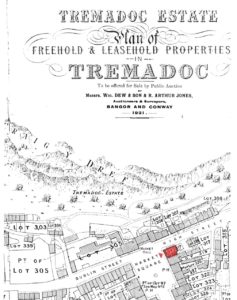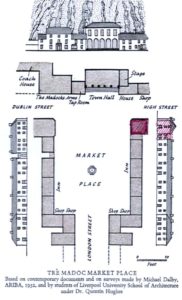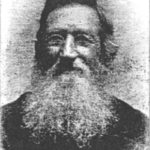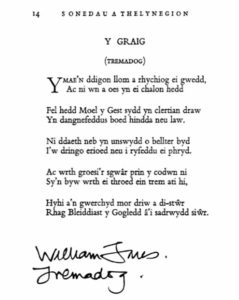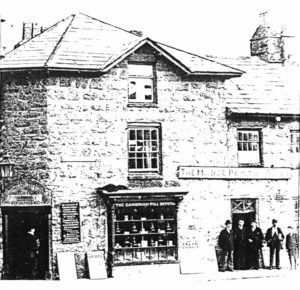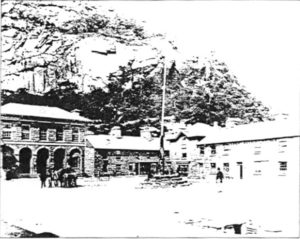History
Dating from 1805, the building now called the Tremadog Memorial Institute has a rich an interesting history.
Below you can find a transcript from “Tremadog Memorial Institute 1805-2002” by Leslie Jones.
Tremadog Memorial Institute 1805 – 2002
The building now named as The Tremadog Memorial Institute was probably built between 1805-10 on land reclaimed by William Alexander Maddocks M.P. who established the small town of Tremadog at the beginning of the 19th century by embanking the estuary of the Afon Glaslyn. The town forms an interesting example of early 19th century planning, and it remains almost in its original state.
The major structure in the centre of the village is the Town Hall in the Market Square. It is a two-storied building of local slate, which is utilised for most of the “stone” dressings as well as the coursed rubble of the walls. Possibly erected and occupied by 1807, as were most of the buildings in the square which are built of the same material, (mentioned by Fenton in 1810 and by Hyde Hall 1809-11).
The Market Square was regarded as the hub and architectural climax. References are made in Maddocks’ correspondence to the layout, sighting of various buildings, the main inspiration seems to have been Inigo Jones’ design for the piazza at Covent Garden (covered market space). See plan.
Consideration was given to houses and shops in the market square to balance the visual effect of the Town Hall and Hotel at the top of the T shaped layout, (shops as a separate item were unusual in Wales and many parts of England at this period).
The Institute, instigated in the early 1920’s as a W.W.I. Memorial after the building was purchased during the Tremadog Estate Sale of 1921, (it contained shop, office, parlour, kitchen, scullery, five bedrooms and a small stable in the yard, rent @ £15 p.a.). There was also the printing office, warehouse with small attic, rent £5 with a door on to the main square (see photo).
Until the 1920s it was partially used as a dwelling with the ground floor occupying the chemist shop and printing workshop. These two establishments were run from 1839 by Robert Isaac Jones (Alltud Eifion) 1815-1905. Poet and editor who earned a living as the chemist in the Cambrian Pill Depot. “His verse has little merit” (Lit of Wales, Stevens), but he did valuable work as a printer for the Madoc printing office. He also made a collection of local antiquities entitled “Y Gestiana” 1892 (re-printed 1975 National Eisteddfod Bro Dwyfor). He also produced and published “Y Brython” a literary and antiquarian journal, which was launched in 1858 as a weekly newspaper, which became a quarterly journal until its demise in 1863.
Its editor was Daniel Silvan Evans (1818 – 1903) who became professor of Welsh at University College Wales, Aberystwyth (1875 – 1883). He edited most of the Welsh Prose classics produced during that period. Tremadog was a participating centre in the cultural revival, that was being promoted in Wales. Evans was a lexicographer and he started a dictionary of the Welsh language that was to be comparable to the Oxford English dictionary.
The Madoc printers occupied the site until the 1920s when they moved to Porthmadog: It was later used for a period after W.W.II. as a fruit shop run by an ex- serviceman. William Owen (1830 – 1865), Timber Merchant and hymn writer, and composer, See “Ar Ian afonydd Babilon” and “lesu dyrchafedig” was also associated with the Square. There is a memorial plaque in the University buildings at Bangor.
The building as a Memorial Institute was a snooker hall (still in use), concert hall (the upstairs area was almost large enough to seat most of the village population). Whist-drive hall, community centre, public meeting hall, public hearings and civic and planning appeals.
During the late 1930’s it became the civil defence centre and the issue of gas masks to the whole village and surrounding farms, was a major occurrence.
Part of the building is still used as an art exhibition space during the summer. The Federation of Women’s Institute hold their meetings and concert in the upper part, and it is used as a day Pre-school nursery. It has also taken over the role from the local primary school as a Polling Station.
There was from the mid 1920′ s for over 40 years, an excellent library of a few thousand books, ranging from Daniel Owen, Henty, Dickens to Eifion Wyn. These were all sold to meet increasing repair cost to the building, but to the great loss of the village as a cultural asset.
William Jones 1896-1961 (Llanc Ifanc o Lyn) was also a librarian for a period (see Stevens) as he resided in the village for some considerable time, he wrote a great deal of his verse and published “Adar Rhiannon” in 1947 and “Sonedau a Thelynegion” in 1950 (see “Y Graig” as an example enclosed) during his stay.
Resources have like other public buildings been very limited, but throughout its existence for nearly 200 years, it has been a focal point for the community: Its cultural participation in Welsh literature is partially forgotten, but its use and activity in the present and future days and age is still as potential as ever.
Bibliography and source material
- R.C.A.M. Wales, 1959, Vol 2, Ynyscynhaearn.
- Topographical Dictionary of Wales, Vol 2, Samuel Lewis, 1834.
- Y Gestiana, Alltud Eifion, 1892.
- Y Brython, 1858 – 63.
- Oxford Companion to the Literature of Wales, Stevens, 1986.
- Hanes Porthmadog, Edward Davies, 1913.
- Porthmadog, Myfanwy Morris, Gwynedd Archives.
- Maddocks and the Wonder of Wales, Elizabeth Beazley, 1967.
- Hanes cychwyn yr achos yn Nhremadog, 1810 – 1960.
- Tremadog and Porthmadog Estate Sale, 1892.
- Tremadog Estate Sale, Jan 1921.
- Caernarvonshire Records, Catalogue 1968.
